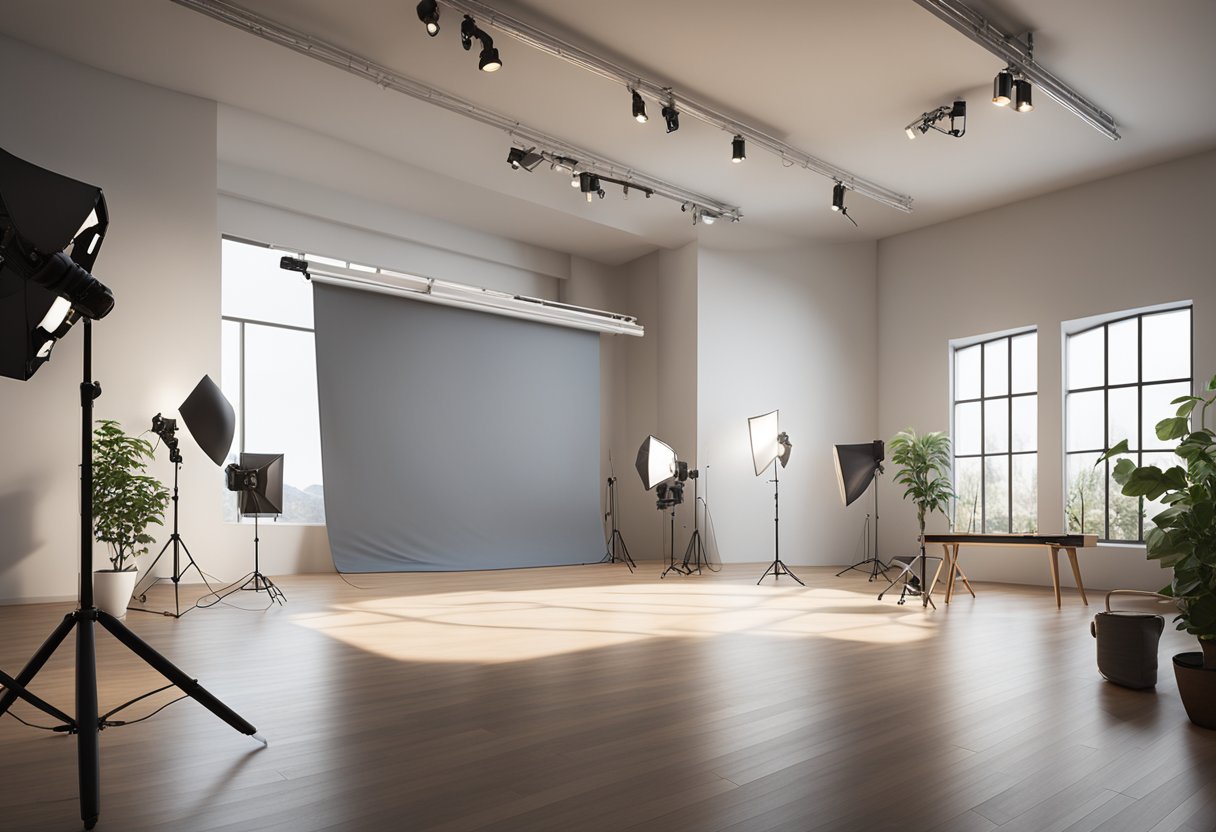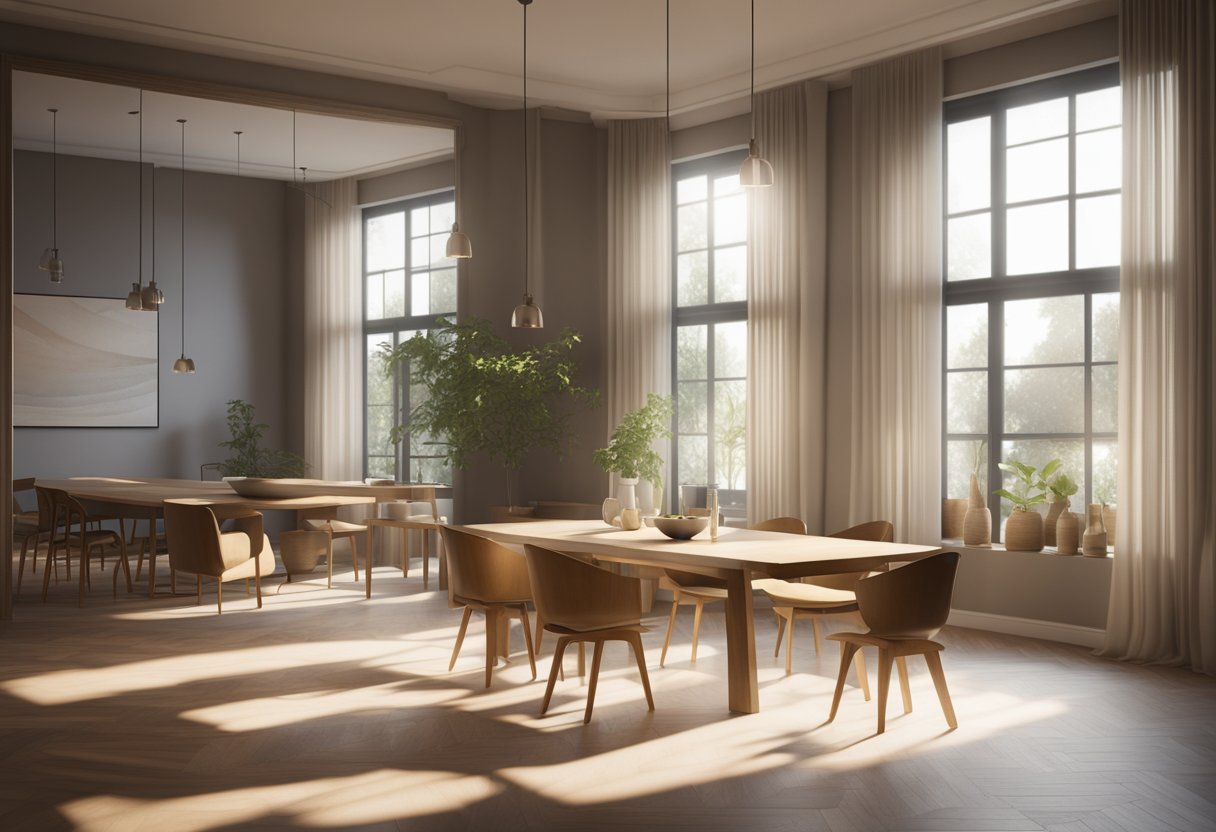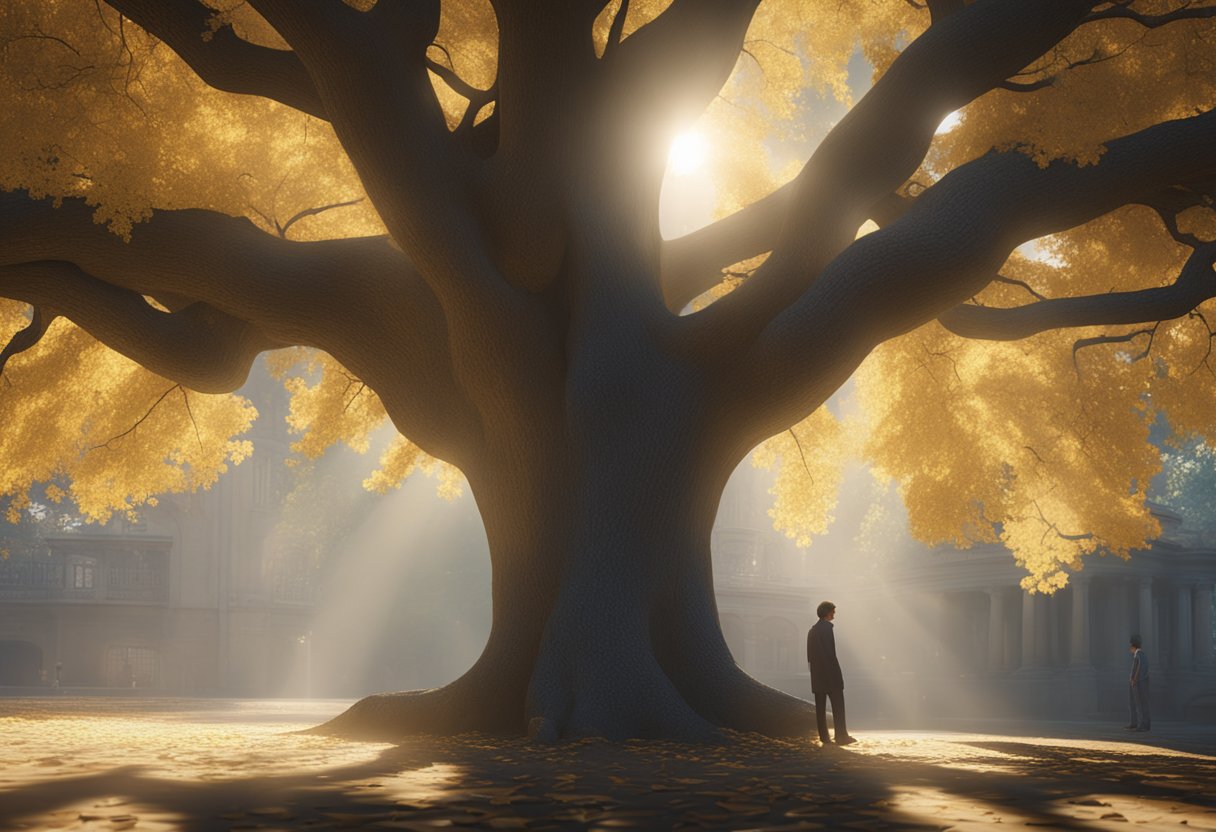What Are the Key Differences Between Studio and Natural Light Portrait Photography

Portrait photography is a popular genre that captures the essence of a person’s character, personality, and emotions. It is a form of art that requires skill, creativity, and the right equipment. Two primary types of portrait photography are studio and natural light photography. Both have their unique features, advantages, and disadvantages. Understanding the key differences between them can help photographers choose the right approach for their projects.
Studio light photography involves creating a controlled environment where photographers can manipulate light, shadows, and other elements to achieve a particular look and feel. It requires specialized equipment, such as strobe lights, light modifiers, and backdrops. In contrast, natural light photography relies on the available ambient light, such as sunlight or artificial light sources, to illuminate the subject. It is more spontaneous and unpredictable, as photographers have less control over the lighting conditions.
Key Takeaways
- Studio light photography provides more control and consistency, while natural light photography is more spontaneous and unpredictable.
- The quality and characteristics of light differ in studio and natural light photography.
- The choice of equipment, setting, and location, as well as the impact on the subject and model, post-processing considerations, costs and investments, and skill and experience required, vary between studio and natural light photography.
Definition of Studio Light Photography

Studio light photography is a type of portrait photography that involves using artificial light sources to illuminate the subject. The photographer has full control over the lighting conditions, which allows them to create a specific mood or atmosphere in the photograph.
The most common types of artificial light sources used in studio photography are strobe lights, continuous lights, and LED lights. Strobe lights are the most popular choice for studio photography because they provide a powerful burst of light that freezes motion and creates a sharp image. Continuous lights, on the other hand, provide a constant source of light that is useful for video or when shooting in low light conditions. LED lights are a newer technology that provides a more energy-efficient and environmentally friendly option for studio lighting.
In studio light photography, the photographer can use a variety of lighting setups to achieve different effects. For example, a classic three-point lighting setup involves using a key light, fill light, and backlight to create a well-balanced and dynamic image. Alternatively, a high-key lighting setup involves using bright and even lighting to create a soft and airy image, while a low-key lighting setup involves using dramatic and moody lighting to create a more intense and mysterious image.
Overall, studio light photography provides the photographer with a high degree of control over the lighting conditions, which allows them to create a specific look and feel in their photographs. It is a popular choice for portrait photographers who want to create professional and polished images that showcase their subjects in the best possible light.
Definition of Natural Light Photography

Natural light photography is a technique of capturing images using only the available light, without the use of any artificial lighting equipment. It relies on the ambient light present in the environment, such as sunlight, shadows, and reflections, to create a particular mood and atmosphere in the photograph.
The key advantage of natural light photography is that it produces a more organic and authentic look, as it captures the subject in their natural environment. This technique is particularly useful for outdoor photography, where the photographer can take advantage of the changing light conditions throughout the day to create a variety of effects.
However, natural light photography also has its challenges. The photographer must be able to work with the available light and adjust their camera settings accordingly to achieve the desired exposure and depth of field. They must also be able to anticipate and work around any potential obstacles, such as harsh shadows or uneven lighting, to produce a high-quality image.
In summary, natural light photography is a unique and versatile technique that requires skill and experience to master. It offers a more authentic and organic look to the photographs, but also requires careful consideration of the available light and environment to produce the desired results.
Light Quality and Characteristics
Hard vs. Soft Light
The quality of light in portrait photography refers to the degree of hardness or softness of the light source. Hard light creates sharp, well-defined shadows, while soft light produces more gradual, diffused shadows. Studio lighting generally produces harder light, while natural light tends to be softer.
Hard light is often used to create dramatic portraits with high contrast and sharp shadows. This type of lighting can be achieved through the use of spotlights or direct sunlight. Soft light, on the other hand, is often used for more flattering and natural-looking portraits. This type of lighting can be achieved through the use of diffusers or reflectors to soften the light source.
Color Temperature
Another important characteristic of light in portrait photography is color temperature. Color temperature refers to the warmth or coolness of the light source, measured in degrees Kelvin. Studio lighting often has a cooler color temperature, while natural light tends to be warmer.
Cooler light sources, such as fluorescent or LED lights, produce a bluish tint, while warmer light sources, such as incandescent bulbs or the sun, produce a yellow or orange tint. The color temperature of the light can have a significant impact on the overall mood and feel of the portrait.
In conclusion, understanding the quality and characteristics of light is essential for creating successful portrait photography. By choosing the right type of light and adjusting the color temperature, photographers can achieve the desired mood and style for their portraits.
Control and Consistency
When it comes to portrait photography, control and consistency are two important factors that can make or break a shoot. In studio photography, the photographer has complete control over the lighting, which allows for consistent results. On the other hand, natural light portrait photography is heavily dependent on weather and time of day, which can result in inconsistent lighting.
Adjusting Studio Light
In a studio setting, the photographer has the ability to adjust the lighting to their preference. This can be done by adding or removing light sources, changing the intensity of the light, adjusting the angle, and more. This level of control allows for consistent results from shoot to shoot, which is especially important for professional photographers who need to deliver consistent quality to their clients.
In addition, studio lighting can be used to create a specific mood or atmosphere. For example, a photographer may use harsh lighting to create a dramatic effect or soft lighting to create a more romantic feel. This level of control over the lighting is not possible with natural light photography.
Dependence on Weather and Time for Natural Light
Natural light portrait photography, on the other hand, is heavily dependent on the weather and time of day. The quality and intensity of natural light can vary greatly depending on the weather conditions, which can result in inconsistent results from shoot to shoot. For example, a cloudy day can result in diffused lighting, while a sunny day can result in harsh shadows.
In addition, natural light photography is limited by the time of day. The golden hour, which is the hour after sunrise and the hour before sunset, is often considered the best time for natural light portrait photography. However, this time window is limited, which can make scheduling shoots difficult.
Overall, while both studio and natural light portrait photography have their pros and cons, the level of control and consistency that can be achieved with studio lighting makes it a popular choice for professional photographers.
Equipment and Gear
Studio Light Equipment
In studio portrait photography, the photographer has complete control over the lighting environment. This means that the equipment used is specifically designed for studio lighting. The main tool used is a strobe or flash unit that produces a powerful burst of light. These units are often mounted on light stands and can be triggered remotely by the photographer. The light produced by these units is consistent and can be adjusted to the photographer’s liking. In addition to the strobe units, photographers may also use softboxes, umbrellas, and reflectors to manipulate the light and create the desired effect.
Natural Light Modifiers
In contrast to studio photography, natural light portrait photography relies solely on the available light in the environment. This means that the photographer must be skilled at reading and manipulating natural light to achieve the desired effect. One of the main tools that natural light photographers use is a reflector. A reflector is a large, reflective surface that bounces light back onto the subject, creating a more even and flattering light. Additionally, natural light photographers may use diffusers to soften harsh sunlight, or use a window to create a soft, directional light.
Overall, the equipment and gear used in studio and natural light portrait photography are vastly different. While studio photographers have complete control over the lighting environment and use specific equipment designed for studio lighting, natural light photographers must rely on their own skill and creativity to manipulate the available light.
Setting and Location
Studio Environment
In studio portrait photography, the photographer has full control over the lighting and background. The lighting can be adjusted to create a specific mood or effect, and the background can be changed to complement the subject. The studio environment allows for consistent results, as the lighting and background remain the same throughout the session. This is especially useful for commercial and product photography, where consistency is key.
Outdoor and Indoor Natural Settings
In natural light portrait photography, the photographer relies on the sun and environment to create the lighting and background. This can result in a more organic and natural look, as the subject is captured in their natural environment. The photographer must be aware of the time of day and weather conditions to ensure the best lighting. Outdoor settings can provide a variety of backgrounds and textures, while indoor settings can offer unique and interesting lighting opportunities.
Overall, the choice between studio and natural light portrait photography depends on the desired outcome and the subject being photographed. Studio photography provides consistent results and control over the environment, while natural light photography offers a more organic and natural look.
Impact on Subject and Model
When it comes to portrait photography, the choice between studio and natural light can have a significant impact on the subject and model.
In a studio setting, the photographer has complete control over the lighting, which allows for precise adjustments and a consistent look. This can be beneficial for creating a specific mood or style, as well as highlighting certain features of the subject. However, the controlled environment can also feel artificial and intimidating for some models, which can affect their expressions and body language.
On the other hand, natural light photography takes advantage of the available light, which can create a more relaxed and natural atmosphere. This can be especially helpful for capturing candid moments and expressions, as well as showcasing the subject in a familiar environment. However, natural light can also be unpredictable and inconsistent, which can make it challenging to achieve a certain look or style.
Ultimately, the choice between studio and natural light portrait photography depends on the photographer’s goals and the subject’s preferences. By understanding the differences and limitations of each approach, photographers can make an informed decision and create stunning portraits that capture the essence of their subjects.
Post-Processing Considerations
When it comes to post-processing, there are some key differences between studio and natural light portrait photography.
In studio photography, the photographer has complete control over the lighting, which means they can create a consistent look and feel across all of their images. This makes it easier to edit images in post-processing, as there are fewer variables to consider. In addition, studio lighting tends to be more uniform, which can make it easier to correct for any minor imperfections in the skin or other areas of the image.
On the other hand, natural light photography can be more challenging to edit, as the lighting conditions can vary significantly depending on the time of day, weather, and other factors. However, natural light can also create a more organic and authentic look, which can be appealing to some clients.
Regardless of the type of photography, it is important to keep in mind that post-processing should be used to enhance the image, not to completely alter it. This means that photographers should avoid making drastic changes to the colors, contrast, or other elements of the image, as this can create an unrealistic or unnatural look. Instead, they should focus on subtle adjustments that enhance the overall quality of the image while maintaining its authenticity.
Overall, both studio and natural light portrait photography have their own unique advantages and challenges when it comes to post-processing. By understanding these differences and using post-processing tools in a thoughtful and intentional way, photographers can create stunning images that capture the essence of their subjects.
Costs and Investments
When considering portrait photography, one of the most important factors to consider is the cost. Studio photography requires a significant investment in equipment, including lighting, backdrops, and props, which can add up quickly. Additionally, renting a studio space can be costly, especially in larger cities.
On the other hand, natural light photography requires minimal equipment investment, as the photographer relies on the available light. This can make it a more affordable option for those just starting out or working on a budget.
However, it’s important to note that natural light photography also comes with its own set of challenges. For example, the photographer must be able to work with the available light to create the desired effect, which can be difficult in certain environments. Additionally, natural light is not always reliable, and a shoot may need to be rescheduled due to weather or other factors.
Ultimately, the decision between studio and natural light photography comes down to personal preference and the specific needs of the shoot. While studio photography may require a larger investment, it offers more control over the lighting and environment. Natural light photography, on the other hand, can be more affordable and provide a more natural look, but may require more skill and experience to execute effectively.
Skill and Experience Required
Both studio and natural light portrait photography require different skills and experience levels. In studio photography, the photographer has complete control over the lighting, which means that they need to have a good understanding of lighting techniques and equipment. They must also have experience in setting up the studio and positioning the subject to create the desired effect.
On the other hand, natural light portrait photography requires the photographer to have a keen eye for finding the right location and positioning the subject in relation to the light source. They must also be able to work with the natural light available, which can be challenging in different weather conditions and times of day.
In terms of equipment, studio photography requires more gear, including lighting equipment, backdrops, and props. Natural light portrait photography requires less equipment, but it still requires a good quality camera and lens to capture the subject in the best possible way.
Overall, both studio and natural light portrait photography require skill and experience, but in different areas. A good photographer should be able to work in both environments and produce stunning portraits regardless of the lighting conditions.
Conclusion
Both studio and natural light portrait photography have their own unique advantages and disadvantages. Studio photography provides complete control over lighting and background, allowing for precise and consistent results. Natural light photography, on the other hand, offers a more organic and authentic feel, and can create a more relaxed and comfortable atmosphere for the subject.
When choosing between studio and natural light photography, it ultimately depends on the desired outcome and the preferences of the photographer and subject. It is important to consider the location, time of day, and weather conditions when shooting outdoors, while in-studio photography requires careful attention to lighting and background setup.
Overall, both studio and natural light portrait photography have their own strengths and can produce stunning results when executed properly. It is up to the photographer to decide which approach best suits their style and the needs of their clients.
Frequently Asked Questions
How do studio lighting setups affect the outcome of portrait photography compared to natural light?
The lighting setup used in studio portrait photography can significantly affect the final outcome of the portrait. Studio lighting setups offer more control over the lighting conditions, allowing the photographer to create a specific mood or effect. For example, a photographer can use a softbox to create a soft and diffused light or a spotlight to create a dramatic effect. In contrast, natural light can be unpredictable, and the photographer may need to adjust their settings or location to achieve the desired result.
What are the advantages of using natural light over artificial light in portrait photography?
Natural light can create a soft, flattering effect on the subject’s face, especially during the golden hour when the sun is low in the sky. It can also create a more natural and relaxed atmosphere, allowing the subject to feel more at ease. Additionally, natural light is free and readily available, making it a cost-effective option for portrait photography.
How does the control of light differ between studio and natural light in photography?
In studio photography, the photographer has complete control over the lighting conditions, including the direction, intensity, and color of the light. They can use various lighting setups and modifiers to create a specific mood or effect. In contrast, natural light is uncontrollable, and the photographer must work with the available light to achieve the desired result. This may involve adjusting their position or the subject’s position to find the best lighting conditions.




